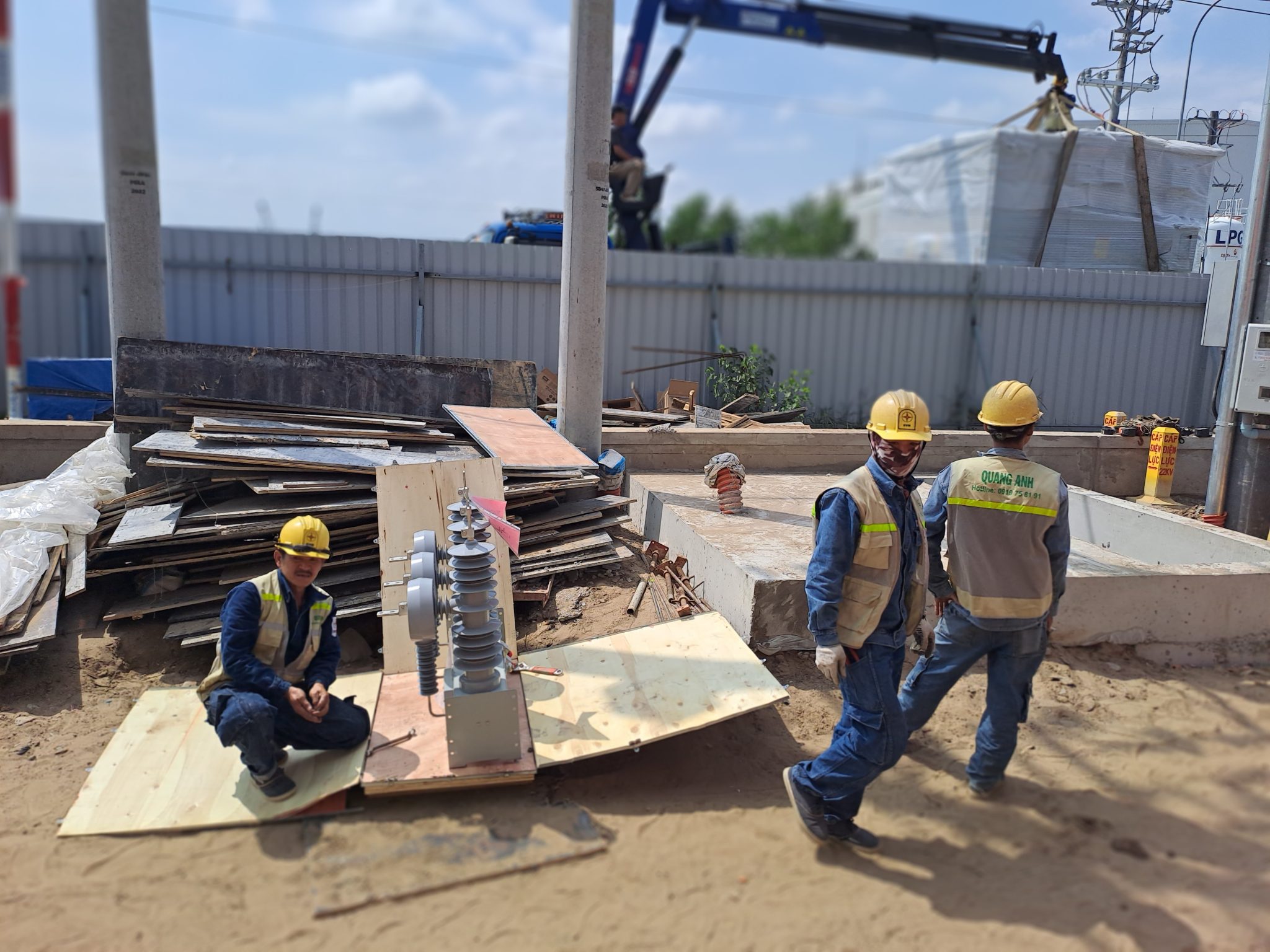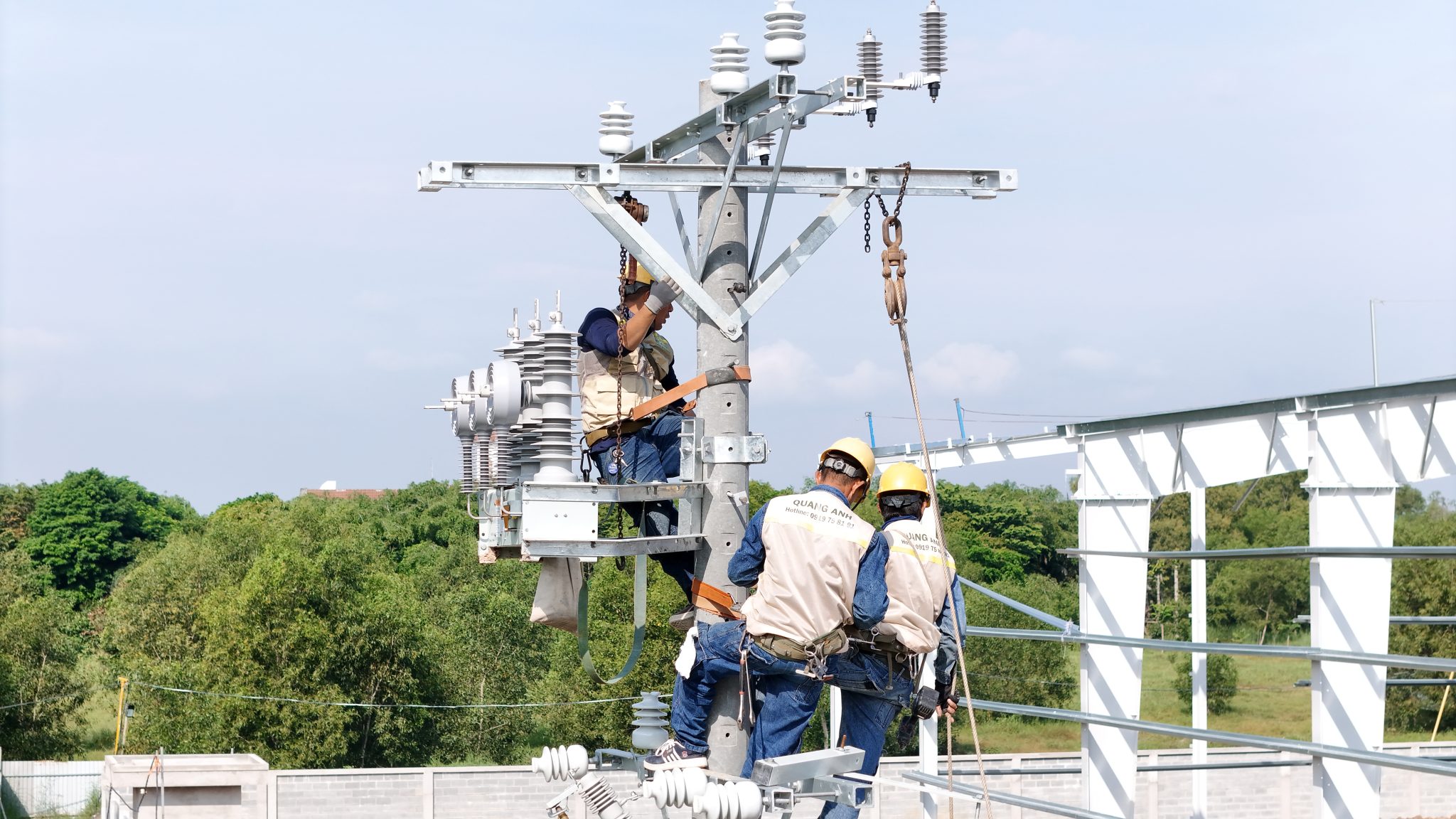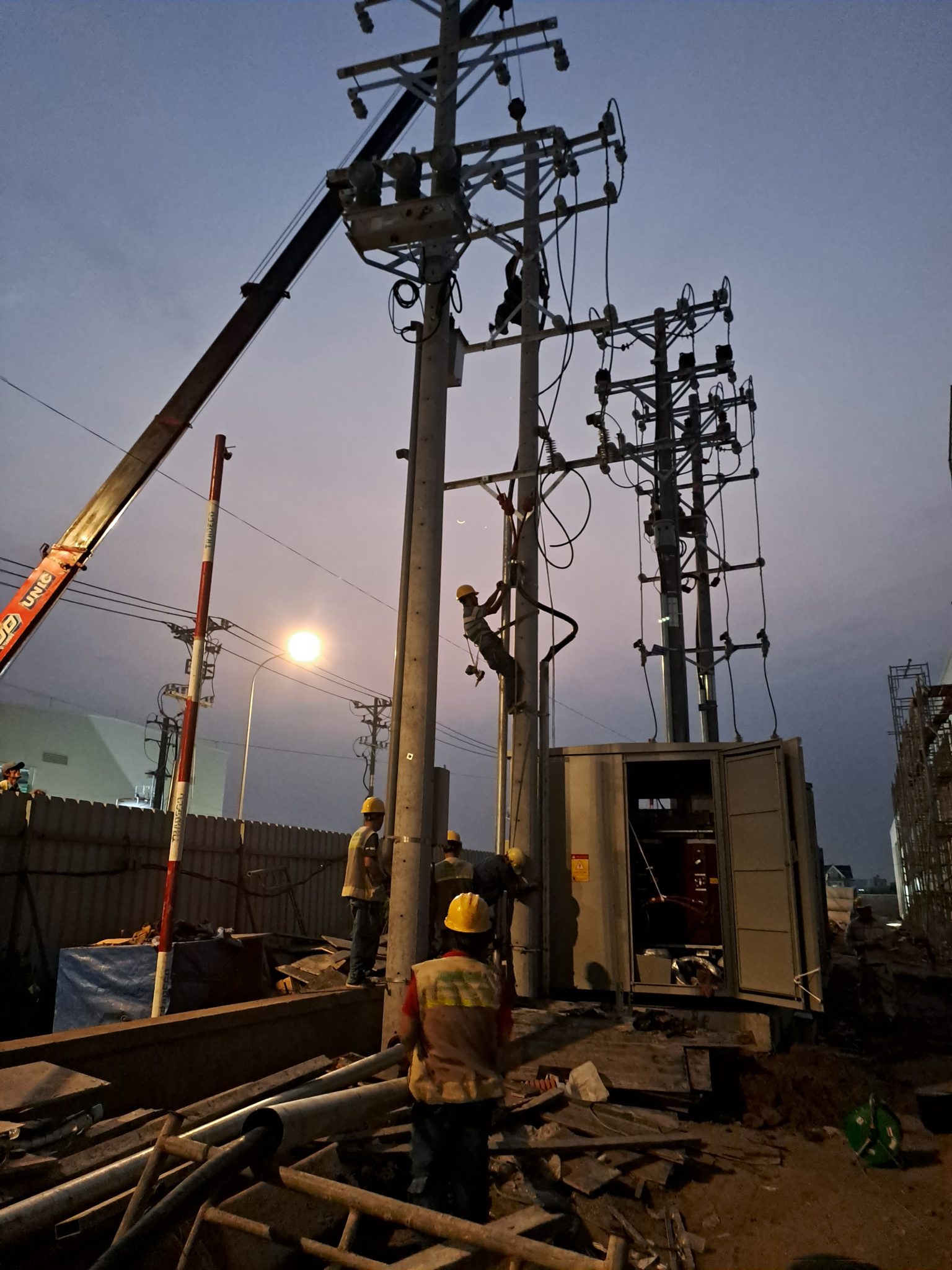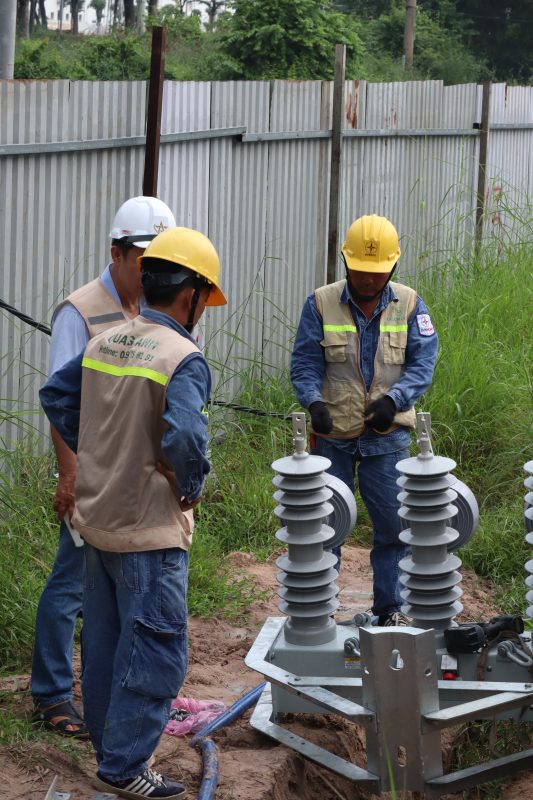Quanganhcons stands out as an adept solar energy contractor, excelling in designing, installing, managing, and supporting solar systems.
Designing and Surveying Solar Energy Systems
Quanganhcons promises accurate surveying and designing for solar energy setups. With advanced technology like drones, Google Maps, and compasses, our engineers determine optimal locations addressing specific client needs, ensuring system efficiency from design to operation.
Designing and surveying solar systems involve a complex technical process with continuous steps to ensure effective and safe operation tailored to specific energy needs.
1. Information Collection and Analysis
- The initial step in designing solar systems is to pinpoint the optimal location, direction, and angle for the panels using positional maps and sunlight evaluations.
- Data on energy consumption of building gadgets is collected to gauge daily and monthly electricity usage.
- Weather conditions, like sunlight and rain in the installation area, are assessed.
- Existing electrical systems are reviewed, and investment budgets for new systems are projected.
2. Calculating Required Solar Panel Power
- Calculate total daily energy needs (Watt-hour) from all devices used.
- Estimate required solar panel power, considering system losses and suboptimal conditions. Usually, a safety factor of 1.3-1.5 times the total energy consumption is used.
- Decide on suitable panel quantity and power accordingly.
3. Choosing Key Components and Equipment
- Select solar panels (PV modules) and devices like charge controllers for stable DC flow, batteries for energy storage, and inverters for DC to AC conversion.
- The system includes AC and DC electrical cabinets, wiring setups, and necessary accessories like aluminum rails to connect panels to the roof or mounting frames.
4. Drafting Technical System Schematics
- Create geographic location maps for the system and component structure schematics to actual scale.
- Ensure optimal installation direction and panel placement to avoid shading that affects light absorption efficiency.
5. Designing Wiring and Connections
- Plan wiring routes to connect panels, controllers, and inverters to electrical loads.
- Ensure wiring is adequately sized, safe, and maintenance-friendly.
6. Calculating and Testing System Performance
- Calculate expected output, conversion efficiency, and energy storage potential.
- Establish monitoring systems and adjustments to sustain stable, efficient solar energy system operations.
Throughout the design and survey process, integrating technical knowledge with solar energy physics and real-world experience is crucial for achieving high, sustainable, and user-safe efficiency.

Professional Installation and Operation of Solar Systems
Quanganhcons selects premium quality panels and inverters from leading global brands, ensuring unmatched durability and performance. With guarantees for up to 30 years, systems are designed for stability and resilience against weather changes, optimizing cost-efficiency and customer benefits.
Professional installation and operation of solar systems demand a specific process to ensure performance and durability. Starting from survey and advice, contractors assess terrain, measure areas, and identify appropriate power needs for usage and environmental conditions. Next is system design, with detailed technical drawings for panel arrangement, solar inverter placement, and protective measures to utilize and safeguard solar energy effectively.
Preparing materials is equally critical. All panels, inverters, and necessary tools must meet high-quality standards and safety regulations before installation. During installation, thorough preparations from securing mounting frames to setting up panels and wiring connections are crucial for safety and efficacy.
A thorough testing and inspection phase is essential to ensure precise system operation post-installation. This process helps identify issues promptly and ensure optimal energy performance. After successful testing, the system is handed over with detailed usage and maintenance guidelines.
Consistent maintenance is vital for ensuring superior performance and system longevity. Routine checks of panels, wiring, and devices like inverters are necessary to quickly resolve issues that might impair performance or pose danger.
Important considerations include avoiding shaded regions that block sunlight, adhering to electrical industry standards, and employing remote monitoring technology to track efficiency.
In conclusion, professional installation and operation of solar systems require a standard process for optimal performance and sustainable safety.

Comprehensive System Monitoring and Customer Support
Quanganhcons leverages advanced control system technology to monitor energy production and system control remotely via mobile or tablet. Customers receive 24/7 support with automated error alerts to maintain safe, steady solar system operations.
In a modern context, comprehensive monitoring and customer support have become indispensable for enhancing satisfaction and maintaining long-term client relationships. Customer Relationship Management (CRM) technology now plays a pivotal role, providing a centralized platform for efficient customer data management and tracking.
Customer Support Team Management and Supervision
Customer service supervisors manage and guide teams, ensuring all service processes meet standards from inquiry handling to issue resolution, with continuous oversight maintaining service quality.
CRM Technology in Customer Management
CRM systems centralize customer information on a singular platform, enabling detailed customer information categorization and branching. Furthermore, this technology optimizes processes such as tracking service team performance, automating reminders, and generating visual reports, enhancing management efficiency and strategic decision-making.
- Centralized Customer Management: CRM technology allows for accurate data storage and update, aiding in developing effective long-term customer care strategies.
- Progress and Work Efficiency Monitoring: Through the CRM model, transparency in work processes and employee efficiency evaluation supports timely service improvement adjustments.
- Multichannel Communication Integration: CRM also permits integration with tools like SMS, call centers, and mobile apps, crafting a seamless customer experience.
- Reporting and Analysis: Real-time intuitive reports aid enterprises in evaluating, analyzing customer needs and behaviors accurately.
- Employee Training and Development Support: With CRM, training and support are conducted to meet consulting standards, elevating service quality.
A comprehensive system of monitoring and customer support offers notable benefits if properly executed, combining technology and human resources. Harmonious coordination enhances customer service efficiency and reinforces brand value for enterprises using electrical and energy systems.

Quanganhcons’ solutions not only optimize investment costs but also ensure long-term value through quality and advanced technology, providing sustainable benefits for customers through solar projects with a commitment to optimal service quality.
For the best solar service experience, contact Quanganhcons at hotline: +84 9 1975 8191.
Quanganhcons offers end-to-end services for solar systems from design and installation to management and maintenance, ensuring superior quality and long-term warranties for clients.
[contact-form-7 id="7239967" title="Contact form 1"]


Related Posts
Tay Ninh Solar Power Planning: Technical Framework, Grid Interconnection, and Rollout Roadmap
Technical overview of solar planning in Tay Ninh: irradiation, grid capacity, permitting, design, operations, and [...]
Dec
Binh Duong Solar Planning: Regulatory Framework, Grid Interconnection, and an Implementation Roadmap for Factories and Industrial Parks
An overview of Binh Duong solar planning: legal framework, interconnection, design, risk management, and an [...]
Dec
Solar Farm Repair: O&M Workflow, IV Curve Diagnostics, Thermography, Inverter Service and Utility-Scale Safety
A utility-scale solar farm repair plan centered on O&M, IV curves, thermal imaging, inverter service, [...]
Dec
Dong Nai Solar Power Plan 2023–2025: Tri An 1,029 MW, Grid Upgrades and the DPPA Pathway
A complete look at Dong Nai’s solar power plan: Tri An 1,029 MW, irradiation potential, [...]
Nov
Quang Ngai Solar Power Plan 2024–2030: Legal Framework, Irradiance Potential, and Development Roadmap
A complete look at Quang Ngai’s solar power plan: capacity targets, irradiance (PVout), development zones, [...]
Nov
Solar Damage Assessment Services: On-Site Procedures, EL/IV/Thermography Testing & Compliance with Standards
Discover IEC/UL/NEC standard solar damage assessment processes: on-site evaluation, EL and IV curve testing, thermal [...]
Nov
Comprehensive Package Estimate for a 1800MVA 500kV Substation: Scope, Configuration 3x600MVA, Standards and Timeline Management
An overview of the 1800MVA 500kV substation estimate: construction scope, configuration 3x600MVA, GIS/AIS, SCADA, standards, [...]
Nov
Factory Electrical Systems: Comprehensive Design and Implementation Guide
Discover the detailed and safe process of factory electrical systems design and implementation. [...]
Oct
Blueprints Required for Factory Construction Permits
Discover the necessary blueprints in factory construction permit applications, from floor plans to electrical and [...]
Oct
What Are the Requirements for a Factory Construction Permit? A Comprehensive Guide
Explore the documentation and steps needed to secure a factory construction permit for streamlined project [...]
Oct
Factory Construction Permit Procedures in Vietnam: Essential Guidelines and Documents
Learn the procedures for securing a factory construction permit in Vietnam, focusing on document preparation [...]
Oct
Key Steps in the Factory Construction Process
Discover the essential steps and requirements for building factories. [...]
Oct
Comprehensive Electrical Substation Solutions by Quanganhcons
Discover the cutting-edge electrical substation solutions offered by Quanganhcons for industrial applications. [...]
Oct
Investment Costs for a 1MWp Solar Power System and Influencing Factors
Explore the investment costs for a 1MWp solar power system in Vietnam and the influencing [...]
Sep
QuangAnhcons: Elevating Wind Energy Solutions
Explore QuangAnhcons' leadership in wind energy and renewable solutions in Vietnam. [...]
Sep
Electrical Contractor Strategies at Becamex Industrial Park
Discover the strategic advancements and partnerships of the electrical contractor at Becamex Industrial Park. [...]
Sep
Investment Insights for 1MW Wind Energy in Vietnam: Costs and Opportunities
Discover the detailed analysis of costs and opportunities for investing in 1MW wind energy projects [...]
Sep
Advanced Electrical Installation Solutions by QuangAnhcons
Explore advanced electrical installation solutions and modern technology with QuangAnhcons. [...]
Sep
Enhancing Industrial Electrical Services with Quanganhcons
Discover Quanganhcons' expertise in industrial electrical services, offering efficient and sustainable power systems. [...]
Sep
Comprehensive MEP Solutions by QuangAnhcons: From Design to Maintenance Excellence
Discover optimal MEP solutions with QuangAnhcons, dedicated to excellence from design through maintenance. [...]
Sep